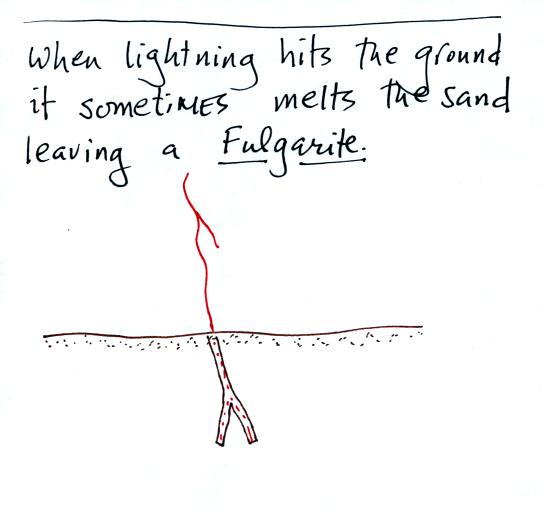
The video showed archaeology students excavating around
the
lightning triggering site after the summer's experiments. They
were
able to uncover and reveal a very long (perhaps world record length)
fulgurite.
Lightning is a serious weather hazard and kills just under 100
people every year in the United States. We discussed some
lightning safety rules that you should keep in mind during
thundery weather.
Stay
away from
tall isolated objects
during
a lightning
storm.
You can be hurt or killed just by being close to a lightning strike
even if you're
not struck directly.
An automobile with a metal
roof and body provides good
protection from
lightning. The lightning current will travel through the metal
and around the passengers inside. The rubber tires really don't
play any role at all. The people in Florida that were
triggering lightning were inside a metal trailer and were perfectly
safe. All of the connections made to equipment outside the
trailer was done using fiber optics, there were no metal wires entering
or leaving the trailer.
You shouldn't use a corded phone or electrical
appliances
during a lightning storm because lightning currents can follow wires
into your home. Cordless phones and cell phones are safe.
It is also a good idea to stay away from plumbing as much as possible
(don't take a shower during a lightning storm, for example). Vent
pipes that are connected to the plumbing go up to the roof of the
house which puts them in a perfect location to be struck.
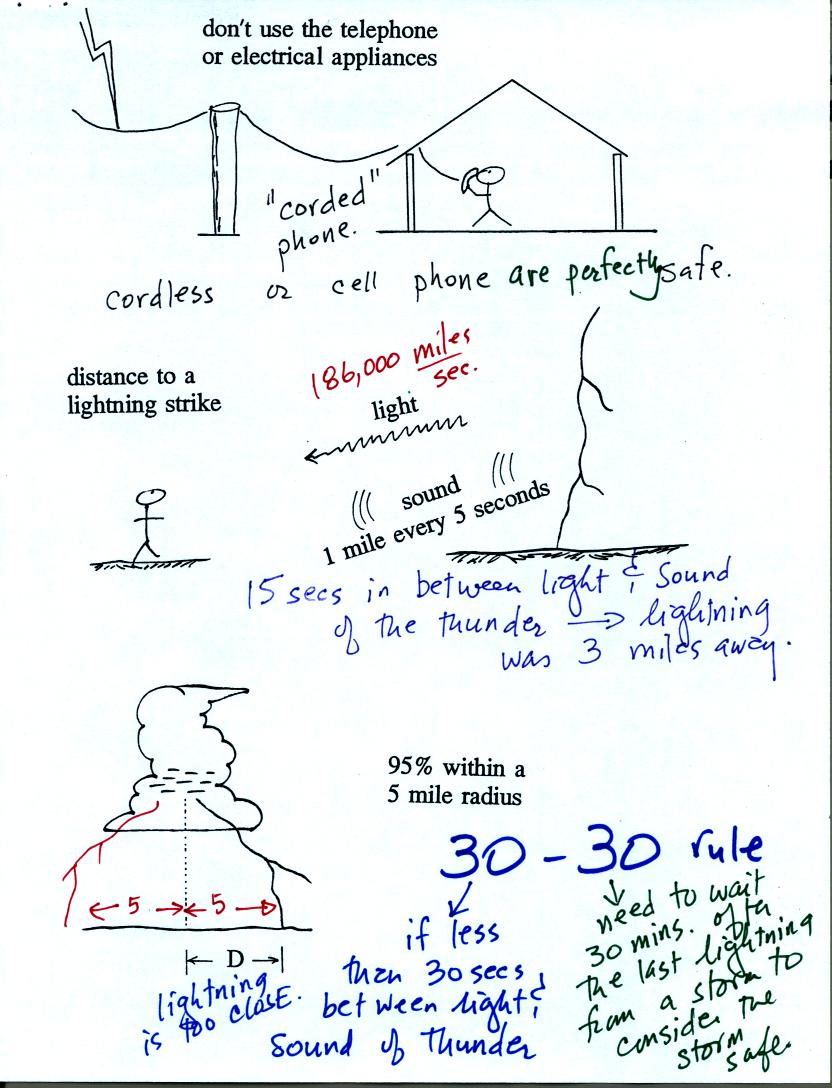
To
estimate the distance to a lightning strike
count the
number of
seconds between the flash of light and when you first hear the
thunder. Divide this by 5 to get the distance in miles.
The latest lightning safety recommendation is the
30/30 Rule.
The 30/30 rule
 People should seek shelter if the delay between
a lightning flash and its
thunder is 30 seconds or less.
People should remain under cover until
30 minutes after the final clap
of thunder.
People should seek shelter if the delay between
a lightning flash and its
thunder is 30 seconds or less.
People should remain under cover until
30 minutes after the final clap
of thunder.




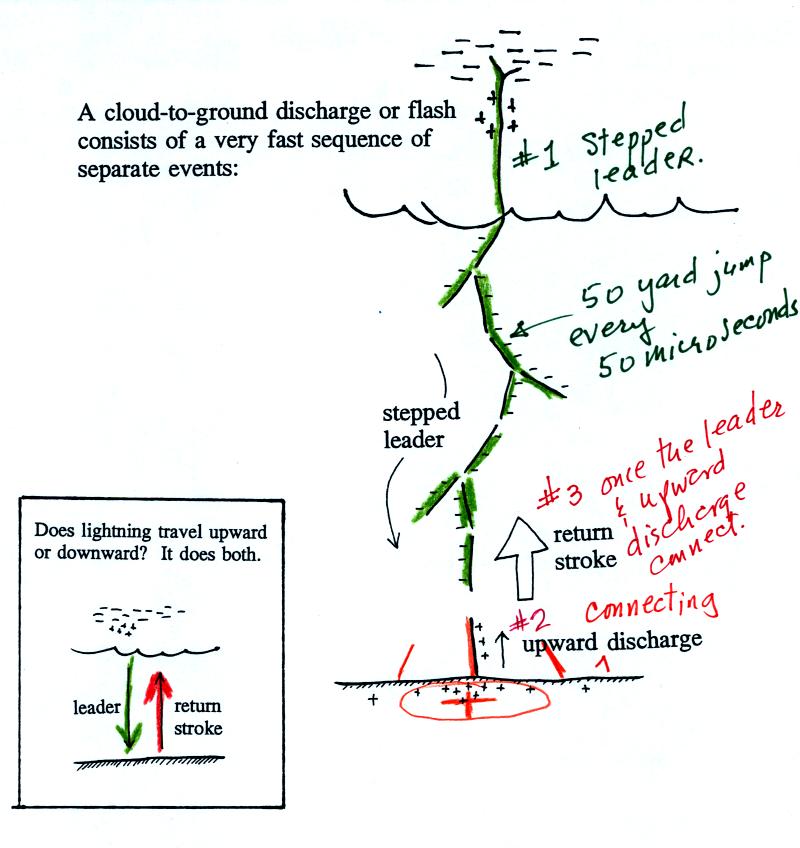

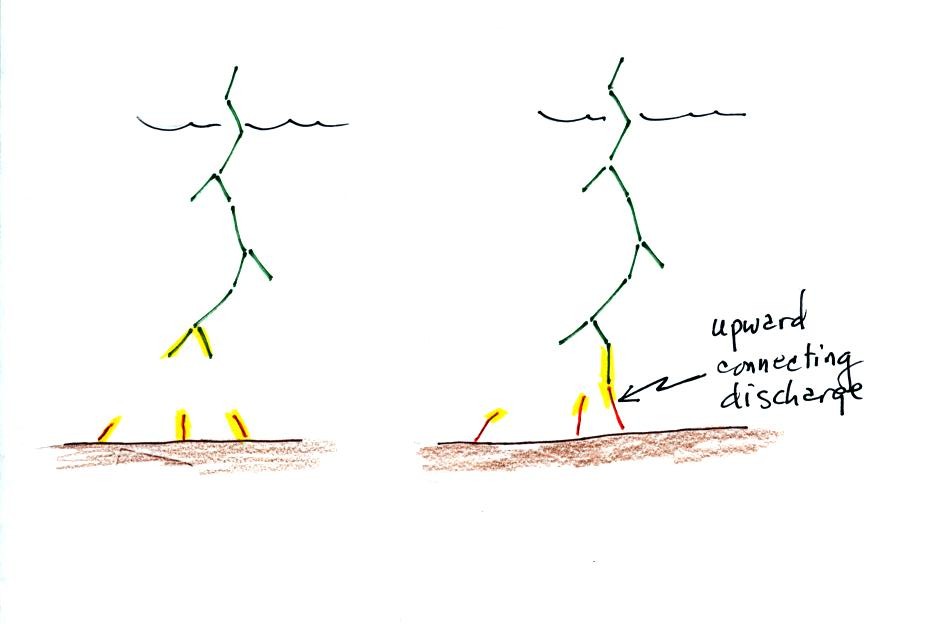

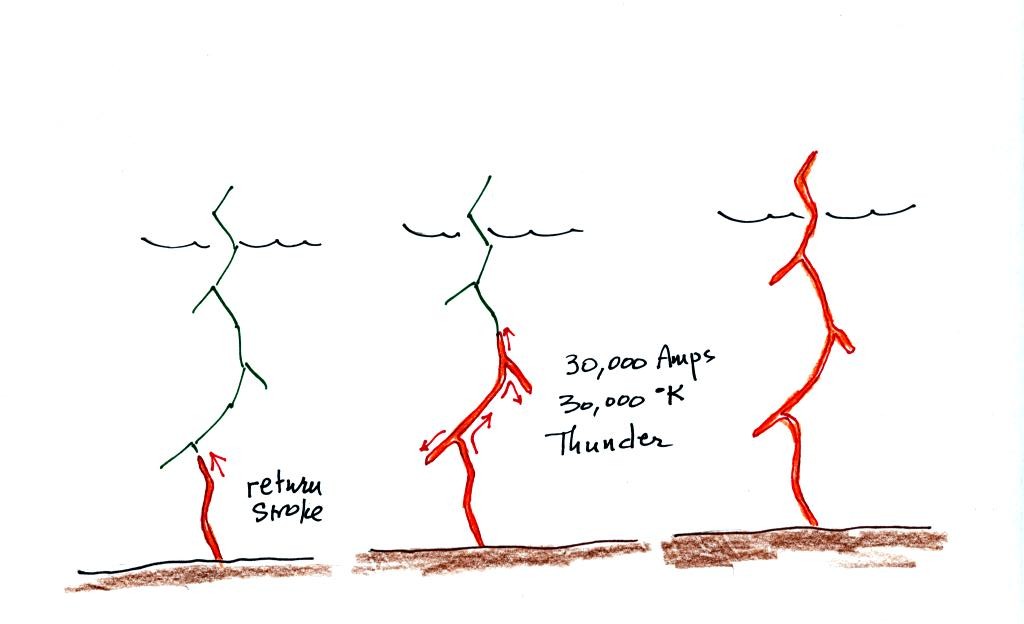
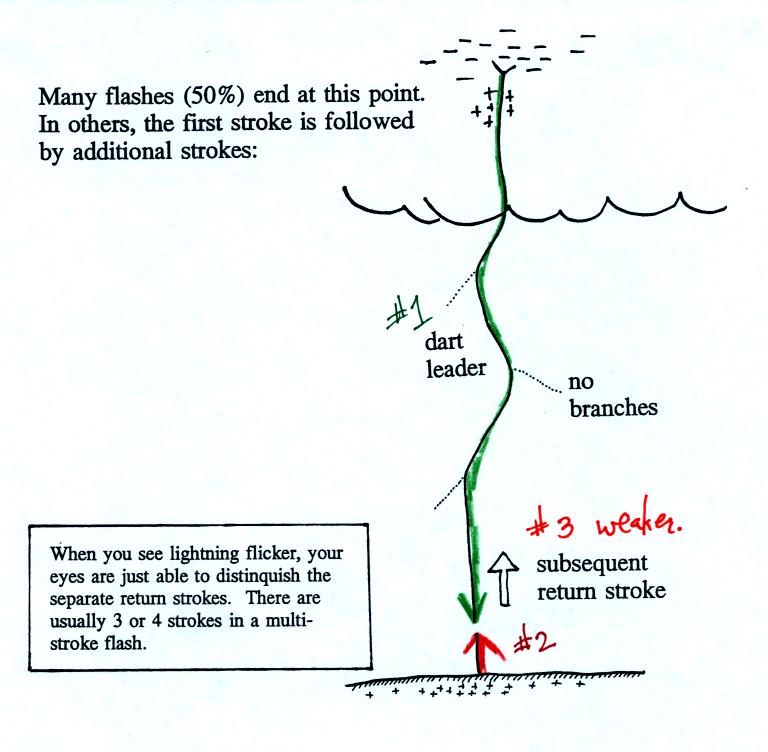
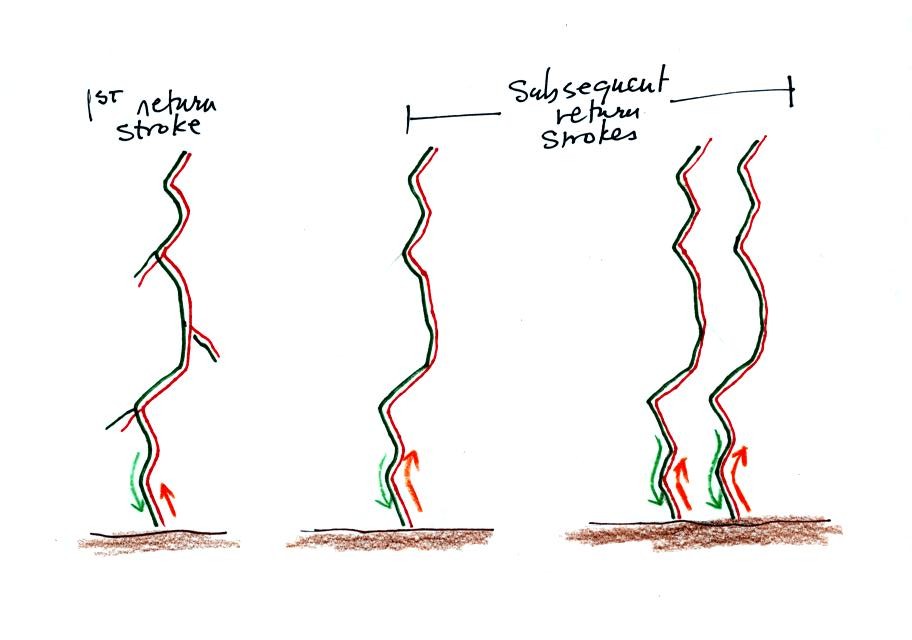
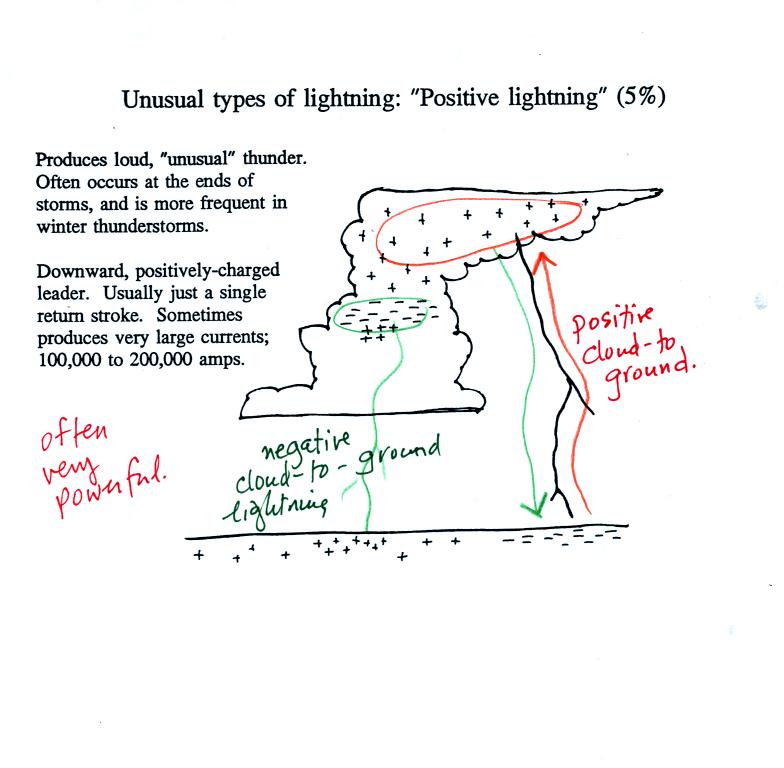
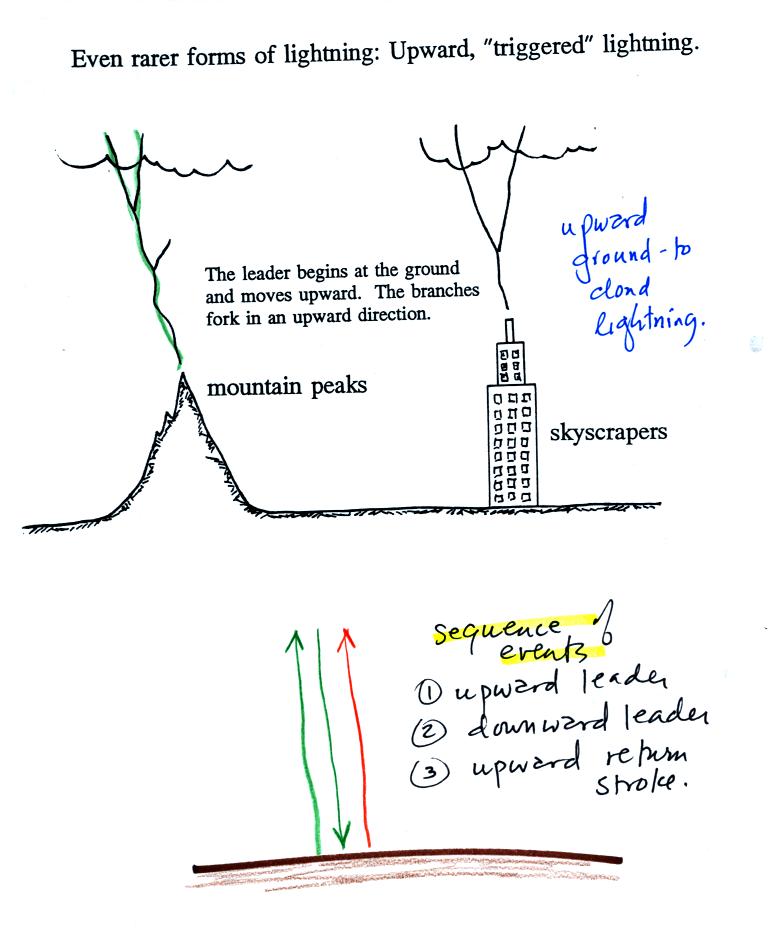
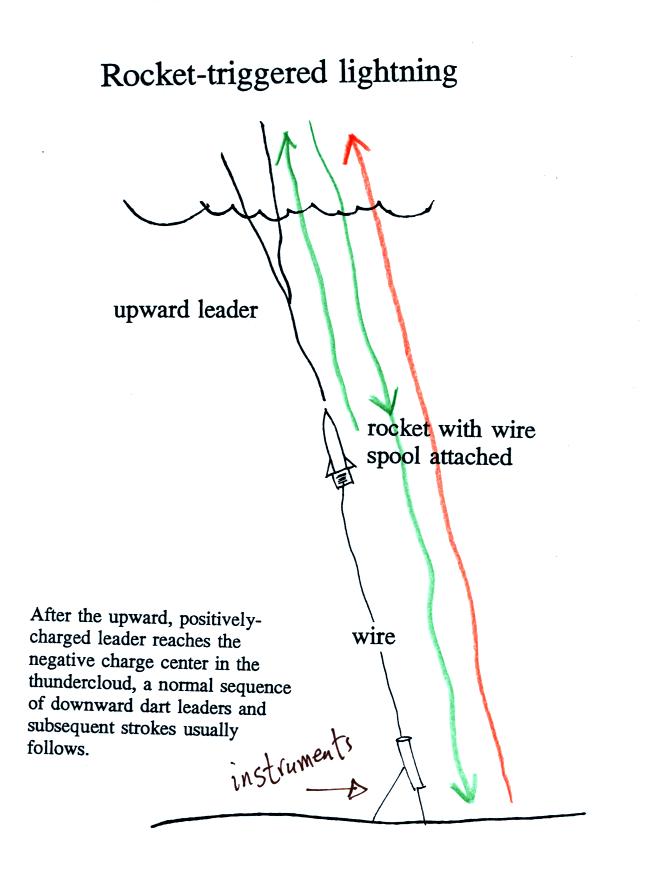



 People should seek shelter if the delay between
a lightning flash and its
thunder is 30 seconds or less.
People should seek shelter if the delay between
a lightning flash and its
thunder is 30 seconds or less.